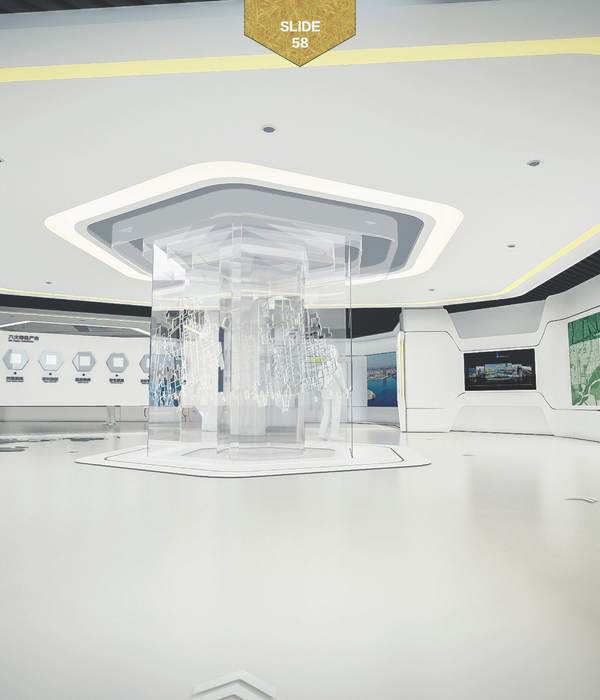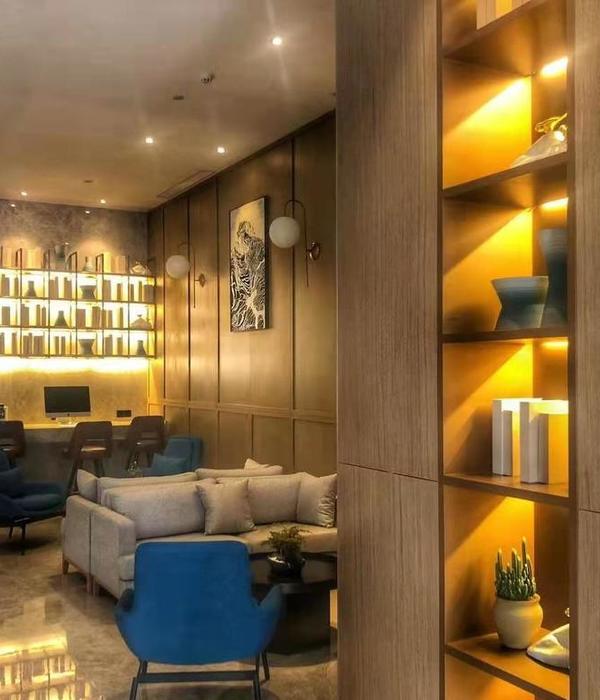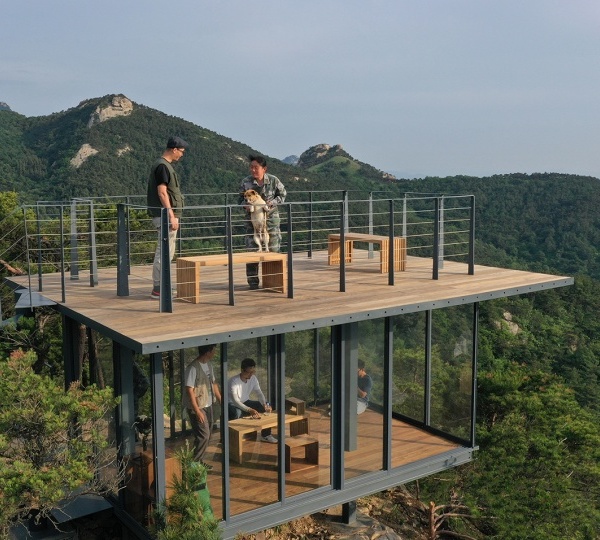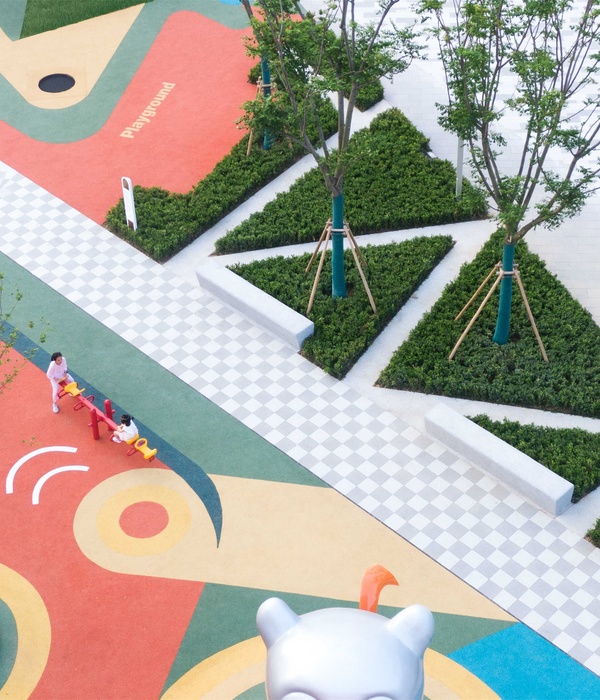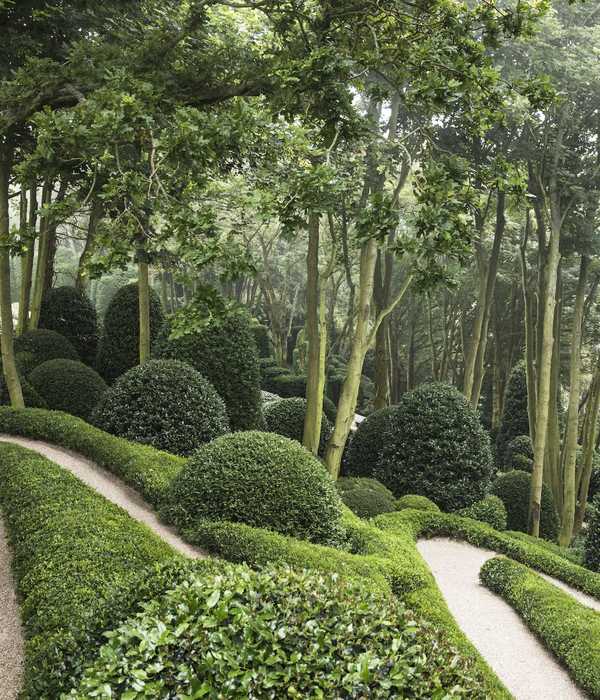A team comprised of 64North Architecture, HNTB Engineering, Bionic Landscape Architecture, and artist Ned Kahn has won an international design competition for Palo Alto's new Adobe Creek Pedestrian & Cyclist Bridge, besting teams from Schlaich, Bergermann Und Partner, Olin Landscape Architects, and Endrestudio as well as Jiri Strasky, Moffat Nichol, and Steven Grover Associates. The winning design, titled "Confluence," reconnects the city with San Francisco Bay, bridging fourteen lanes of the 101 Freeway.
OVERVIEW
For many years, the infrastructure of the automobile has created emissions, noise, and divisions in our communities. Palo Alto has instead embraced a more multimodal future, choosing walking and cycling, developing car sharing and even self-driving vehicles. At the confluence between Adobe and Barron Creeks, the Adobe Creek Pedestrian & Cyclist Bridge creates a new multifunctional, more forward-looking infrastructure, a synthesis of architecture, engineering, landscape, and art. Drawn from the trajectories of the cyclists moving along it and the sinuous waterways that trace the edges of San Francisco Bay, it is designed not as an icon but as an experience, creating a more consequential relationship between Palo Alto and the Bay.
ORGANIZATION
West of US 101 the bridge ascends in a counterclockwise loop, arcing over the freeway before descending in a broad circle. To the east, a new gathering space provides a place to sit and take in the view, with amenities including bicycle repair. Encircled by the bridge is a new vernal pond and boardwalk, a new way to explore the Palo Alto Baylands and the Bay. Recognizing the challenges of multiple users traveling the same route, the bridge creates dedicated zones for pedestrians and cyclists, lifting one above the other, and separating them in plan. Over the freeway the arch gestures to the sky, creating a cathedral-like space. More than a crossing, it is a space to pause and reflect. Twin pathways over the Baylands integrate structure within their solid interior rails, levitating over the sensitive landscape below with piers nearly 100 feet apart. West of the freeway bicycles are outboard, maximizing their turning radius; here, pedestrians are oriented outward, the walkway expanding to provide a space to birdwatch, rest on a bench, and take in the view.
STRUCTURE
Structured as an arch, the bridge leans northward, counterposed to the deck, a network of thin cables between, the first curved network cable arch of its kind. A gateway over the freeway, it is slender, structurally efficient, and cost effective, with excellent seismic performance, eliminating supports in the median and between US 101 and Bayshore Road, increasing safety and future flexibility. The deck, a thin eighteen inches, maximizes visibility and lowers the bridge profile, reducing its length and cost. Constructed of corrosion-resistant weathering steel, its warm hues are sympathetic with the Baylands’ natural palette. This innovative approach extends to construction: erected at a temporary location while foundation work is underway, the arch can be rolled into place with self-propelled modular transports, reducing traffic disruption to a single nighttime closure.
LANDSCAPE
The landscape recognizes its strategic place in the broader watershed, leveraging its small footprint for larger-scale change through hydrologic and symbolic connection. Storm water is captured from the bridge, bike path, and frontage road, treated and routed to a new basin. As the water mixes with seasonal ground water and residual bay mud salinity, this vernal pool creates a new ecological niche. Overflow and grey water from a possible bathroom and drinking fountains can be recaptured in tanks concealed in the bridge abutments, irrigating vertical gardens of pollinator species flanking their sides. Buffering sound and absorbing particulates, these living walls also draw the natural character of the Bay into the City as users first encounter the bridge to the west. Finally, this site, like the rest of the Bay, must address sea level rise: the design anticipates this change, enabling future ecologies and habitats and communicating the importance of resiliency.
ART
Finally, a large-scale artwork by artist Ned Kahn is integrated into the bridge, utilizing technology to engage the natural phenomena of the site. Brushed stainless steel disks are fixed to the cable net, weathervanes swaying in the wind, deterring birds and ensuring their safety. Undulating with each gust and passing vehicle, they sparkle in the sun, an ineffable experience of motion and light.
Quotes
“The winning design includes several amenities at the Baylands gateway, and shows a remarkable integration of form and expression, creating a safe landmark bridge for the use of cyclists and pedestrians, while also acknowledging that thousands of motorists will pass beneath this bridge every day." - Jury Chairwoman Judith Wasserman
{{item.text_origin}}

